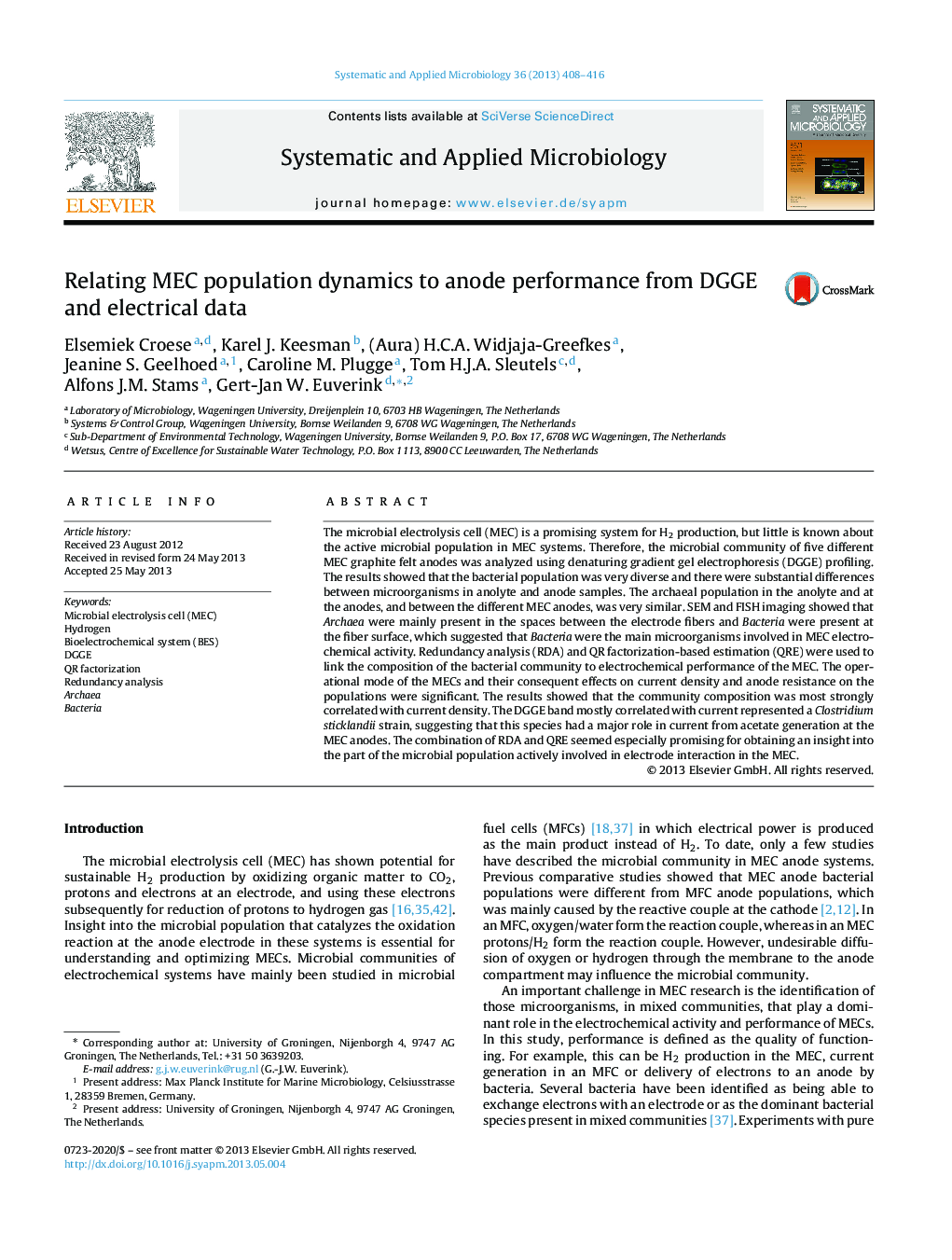| Article ID | Journal | Published Year | Pages | File Type |
|---|---|---|---|---|
| 2063761 | Systematic and Applied Microbiology | 2013 | 9 Pages |
The microbial electrolysis cell (MEC) is a promising system for H2 production, but little is known about the active microbial population in MEC systems. Therefore, the microbial community of five different MEC graphite felt anodes was analyzed using denaturing gradient gel electrophoresis (DGGE) profiling. The results showed that the bacterial population was very diverse and there were substantial differences between microorganisms in anolyte and anode samples. The archaeal population in the anolyte and at the anodes, and between the different MEC anodes, was very similar. SEM and FISH imaging showed that Archaea were mainly present in the spaces between the electrode fibers and Bacteria were present at the fiber surface, which suggested that Bacteria were the main microorganisms involved in MEC electrochemical activity. Redundancy analysis (RDA) and QR factorization-based estimation (QRE) were used to link the composition of the bacterial community to electrochemical performance of the MEC. The operational mode of the MECs and their consequent effects on current density and anode resistance on the populations were significant. The results showed that the community composition was most strongly correlated with current density. The DGGE band mostly correlated with current represented a Clostridium sticklandii strain, suggesting that this species had a major role in current from acetate generation at the MEC anodes. The combination of RDA and QRE seemed especially promising for obtaining an insight into the part of the microbial population actively involved in electrode interaction in the MEC.
